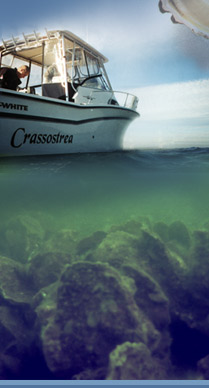

|
 |

       

|
 |
In Situ Determination of Perkinsus marinus Transmission Dynamics in Low Salinity Habitats:
- Kennedy Paynter, Department of Biology and Chesapeake Biological Laboratory, University of Maryland College Park, College Park, MD 20742
- Eugene Burreson, Kimberly Reece, Lisa Ragone-Calvo, Virginia Institute of Marine Science, College of William and Mary
PROJECT DESCRIPTION
Problem Statement
Oyster management agencies in both Maryland and Virginia have adopted aggressive restoration programs to enhance the natural populations that have fallen to record low levels in both states. Restoration has focused primarily on the replacement of critical habitat (oyster shell) and the establishment and preservation of broodstock populations. However, two diseases continue to be rampant in most regions of the Bay and restoration efforts have typically NOT incorporated disease management strategies into the restoration effort.
MSX disease, caused by Haplosporidium nesloni, is intermittent and unpredictable year to year, but it is limited to moderate to high salinities (>12 ppt). Dermo disease, caused by the protozoan parasite Perkinsus marinus, has killed millions of oysters in Chesapeake Bay since it was first described in the 1940s. It is found in oysters throughout Chesapeake Bay, is highly contagious, and can spread rapidly among oysters. Previous studies have documented that disease-related mortality and infection rates are positively correlated with salinity (Ragone and Burreson 1993, Mackin 1956, Mackin 1962, Ray 1954). However, the spread of P. marinus into historically low salinity areas of the Bay in the late 1980s (Burreson and Ragone Calvo, 1996) and its persistence in many if not most of these areas, even in the absence of host mortality, has raised questions about the parasiteÕs transmissibility in low salinity.
Download the entire article here.
|
 |
|
|
 |

